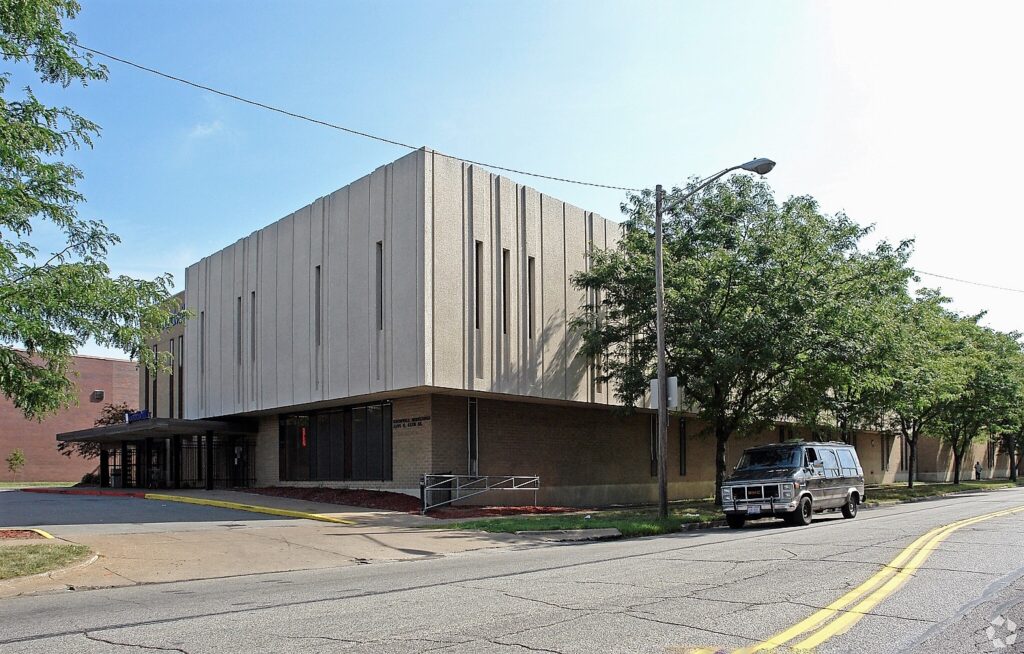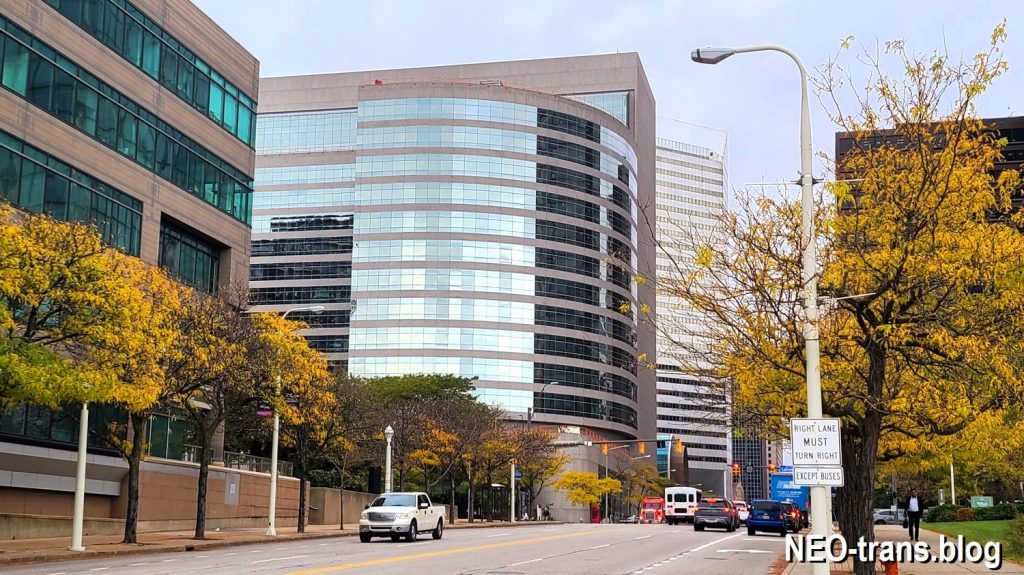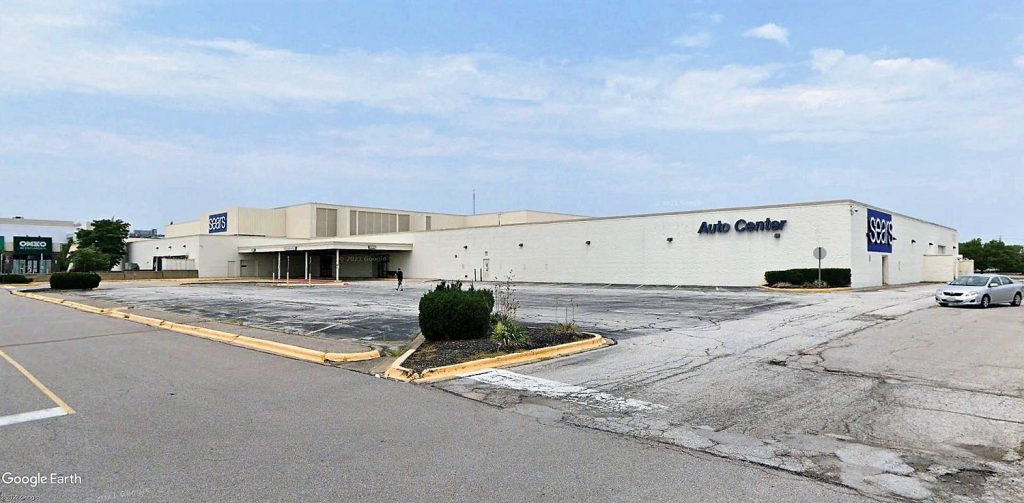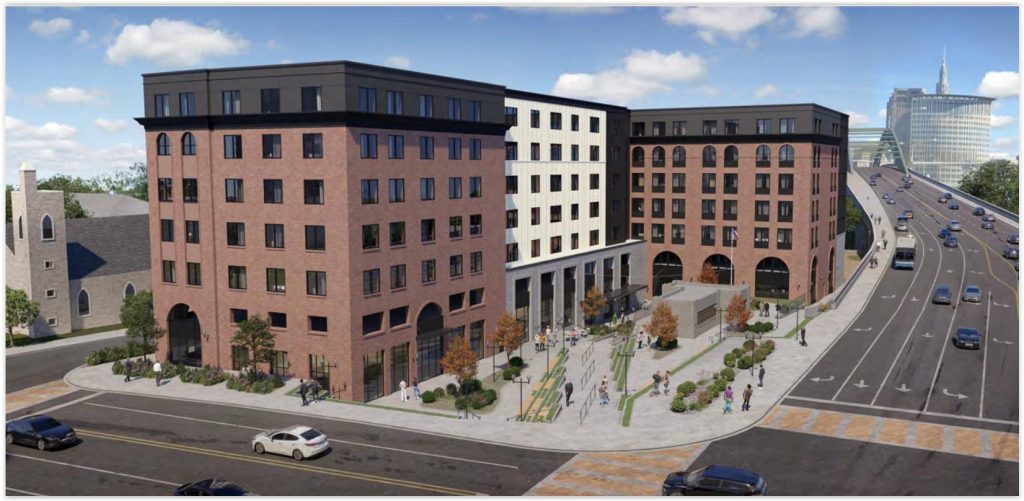
In the coming weeks, work crews will start to appear at the northeast corner of West 25th Street and the Detroit-Superior Bridge near Downtown Cleveland to demolish existing, vacant buildings and begin the construction of Bridgeworks — at least partially at this point (GLSD). CLICK IMAGES TO ENLARGE THEM.
Landmarks gives partial OK to Bridgeworks
After four years of going through multiple design iterations, it somehow seems natural that Bridgeworks finally got the OK today from the city to start construction — but only up to the second floor. To build above that, the project’s development team is going to have to come back to the city for design approval of the building’s top five floors. The team pledged it would do so — quickly.
The Cleveland Landmark Commission unanimously approved granting a certificate of appropriateness to partially build the $84 million Bridgeworks development, 2429 W. Superior Ave., at the edge of the designated Ohio City Historic District. The certificate allows Bridgeworks LLC, a partnership of developers M Panzica Development and Grammar Properties, to secure permits from the city’s Building Department to start work, probably in about 30-45 days.
For now, the permits will be limited to demolishing two structures on the site, preparing the 2-acre site for construction, installing foundations and constructing up to two floors of the 294,636-square-foot building. The first two floors will be built of reinforced concrete for parking, ground-floor resident amenities and support of the overhead structure. The floors above that will be wooden “stick-build” construction for 219 workforce-rate apartments.
“This is a very exciting milestone for this project,” said Brandon Klein, vice president of design at Geis Companies which is designing, building and managing Bridgeworks. “We are very excited to have this approval with conditions, to allow the project to be able to move forward to start construction. We will work quickly to address the few outstanding items the commission is requesting, but this will allow us to have some relief to be able to get the permitting review started.”
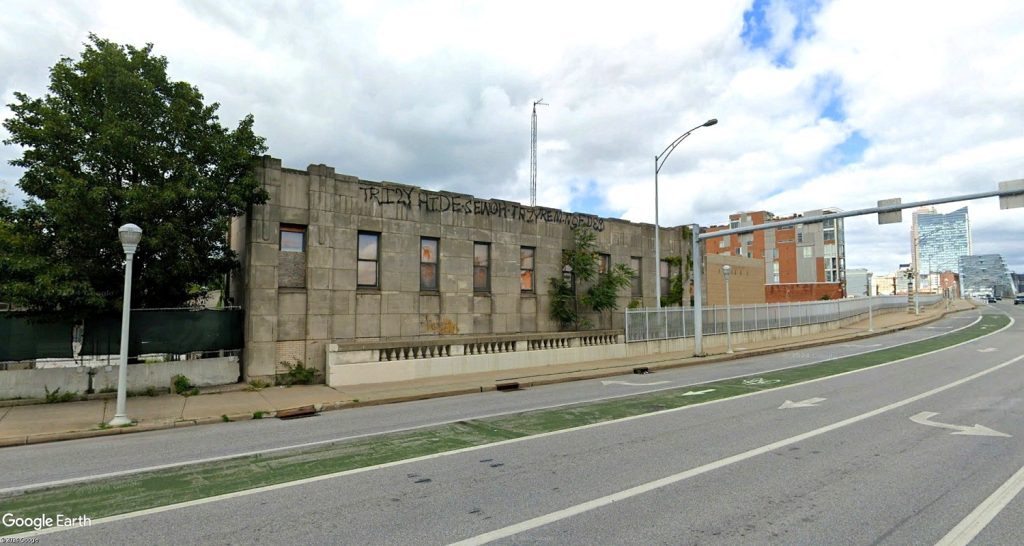
Stonework from the vacant and decaying Cuyahoga County Engineers’ garage which dates from 1941 will be preserved and repurposed into the design of Bridgeworks. A 1917-built subway station entrance building hidden in the trees to the left will be saved. The lighter brick building in the background will not. This view of the Bridgeworks site was taken last month. Demolition could start as early as next month (Google).
Despite the unusual situation that only part of the building can be built at this time, a member of the development partnership told NEOtrans that this would not complicate their ability to secure a single construction loan for the project. “No, we are planning on a holistic close of financing,” said Michael Panzica, principal of M. Panzica Development.
Construction financing is different than project financing, which is already in place. The city and the Cleveland-Cuyahoga County Port Authority have provided a tax-increment financing package including $84 million worth of bonds. Cuyahoga County also has authorized a $2 million loan to the project.
The most significant remaining issue for the Landmarks Commission was the design of Bridgeworks’ exterior, notably on the south side facing the Detroit-Superior Bridge. The Ohio City Design Review Committee last week and the Landmarks Commission today both wanted more use of brick on the center portion of the long building and a consistent cornice between the sixth and seventh floors.
The submitted design had the cornice in the center part of the building placed between the fourth and fifth floors. Klein said at today’s meeting that he didn’t want the cornice at the same level as the building’s bookends or to burden the developers with the cost of adding more brick.
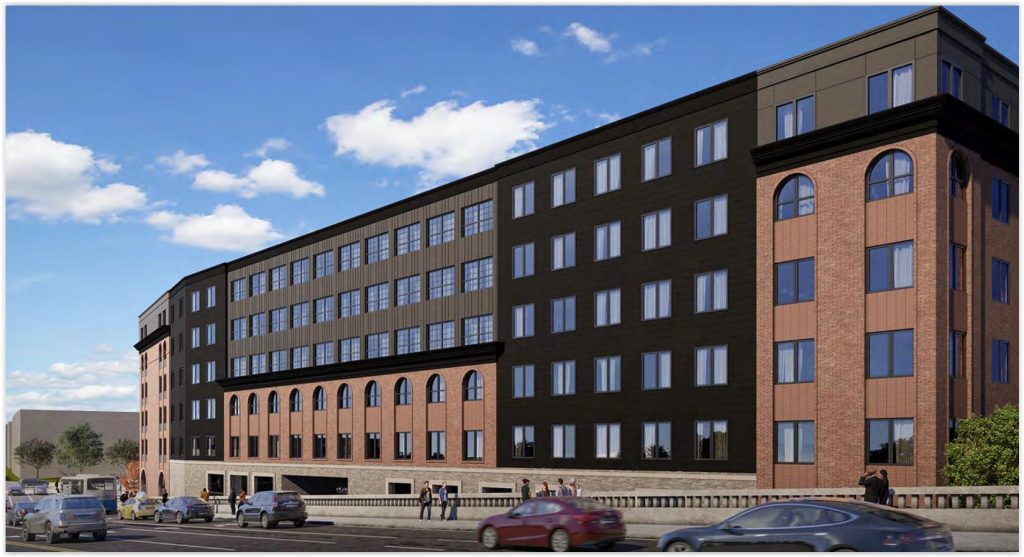
The source of controversy for the city’s design-review panels was this — the proposed design for south side of Bridgeworks. The middle portion, where the brick came up only to a cornice located between the fourth and fifth floors, was a nonstarter for city design reviewers. They wanted it to be in balance with the building’s bookends. But the development team said the increased expense of brick was already a burden so a compromise may be sought (GLSD).
“We didn’t like the symmetry of the building being all continuous the same floor line,” Klein told the commissioners. “We also felt that it made the building too rhythmic. We also had a lot of concerns about the amount of brick that’s been added to this building since the last time it’s been to this board. We’ve been trying to do our best to accommodate but we’re kind of at a tipping point.”
Hearing the commissioners continuing to debate the design of the south façade and with winter rapidly approaching while encroaching on demolition and site prep work, Klein offered a compromise. He said he heard few if any concerns about the scale or form of the proposed building, so he suggested the commissioners approve everything but the building’s “skin.”
“I do want to stress the importance of, honestly, moving this project forward to be able to start the process with this project,” Klein offered. “We’ve been before this commission so many times with this project. The fact that we’ve shown that we’re willing to work with the commission and staff, I ask that you approve this with conditions to work on the south-side cladding.”
A Landmarks Commission staff report said that, “As presented, this would make a fine complementary building. The site is removed from the bulk of the historic district so it allows the commission some flexibility” to approve a building that doesn’t meet the letter of the law, The city’s codified ordinances define the commission’s regulatory powers.
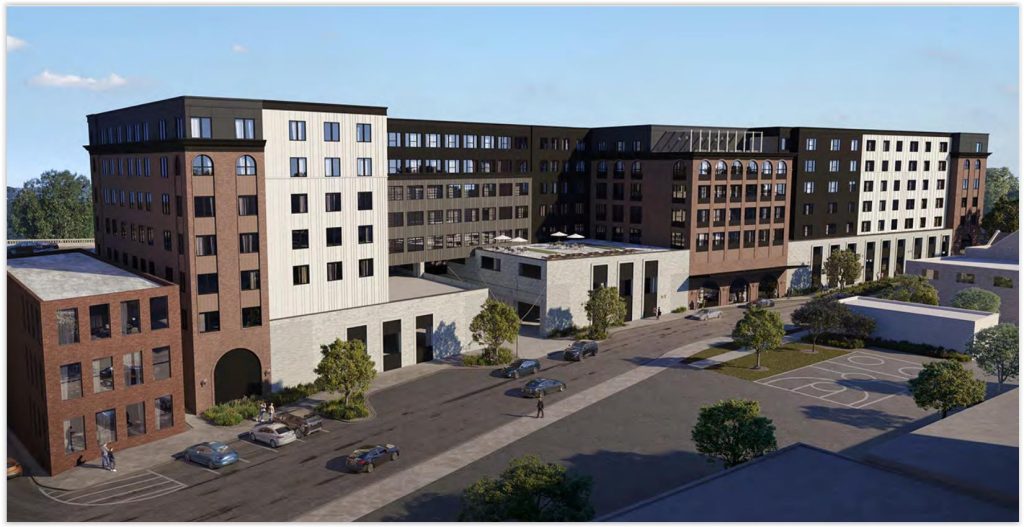
City design-review panels were more supportive of the proposed design of Bridgeworks’ northern façade along West Superior Avenue. It includes two rooftop terraces for residents’ use and a public pedestrian walkway below the building through to the lower level of the Detroit-Superior Bridge which may be reopened as a bike/pedestrian route with public programming (GLSD).
“With each (design) iteration, I believe there has been significant improvement,” said commissioner Chris Loeser, a principal at Cleveland-based architectural firm DLR Group. “In that collaboration, it’s gotten to a much more successful project than when it was first presented. The design feels much more balanced now. But I still think the south façade needs further consideration before I would be willing to approve this.”
The former Cuyahoga County Engineers’ property came to the attention of Panzica in 2018 when it was one of multiple county properties offered for disposition. NEOtrans was first to report in January 2019 that this property was put up for sale and, six months later, that Panzica’s former company was recommended to win the bid.
Over the last four years, Bridgeworks has gone through multiple design revisions as project costs nearly doubled to more than $108 million. It started out as an eight-story building, then 11 stories, and peaking at 16 stories. After the project’s design-build team was replaced, the scale of the building was reduced to 15 stories and now to seven stories.
END


